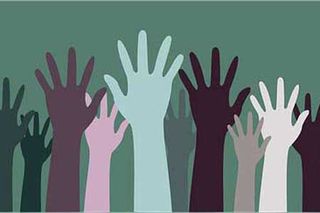Two years ago, I was given the opportunity to work with other teachers, district administrators and my community to create a school based on an idea. It was a huge responsibility to take on and there were a lot of questions about where to begin, but one thing was certain: we wanted to establish a culture built on service learning, family involvement and the potential of our students as leaders and community members.
This idea of culture has always been important to me as an educator. It’s my belief that students, from kindergarten all the way through seniors in high school, have a real opportunity to step into leadership roles and make a mark on the world around them. The problem is, they aren’t often given those opportunities to get involved.
Sitting in a classroom for eight hours a day, it can be hard for students to balance learning, community involvement, extracurricular activities and family time. On the other end of the spectrum, virtual charter schools—while successful all around the country and rightfully proud of what they’re accomplishing—don’t always allow students to feel that they’re a part of a common culture.
When we finally founded Flex Academy, a blended charter school, this was the big idea that guided the creation of version of Flex Academy that is open today.
Bringing families together through service learning
Having students involved in the community has proven to be a powerful experience for both students and families.
For instance, a few years ago, a group of professors at Mills College completed a survey of more than 500 high school students in California. The students who were engaged in some sort of community service in high school were more likely to volunteer or be involved in some civic activity three years after graduation. Of note, most of that volunteer work had classroom learning attached to it. It was shown that participants in community service get more out of it if there is a forum to talk about and question the larger issues involved. At Flex Academy, we’ve aimed to make our school that forum.
Each month, we ask families to have three hours of service per month for a total of 27 hours—a goal that we surpassed last year and hope to do again this year. This is completed through a variety of projects: working with local police and fire departments to create ‘Buddy Bags’ as sources of comfort for children that have been through a traumatic experience; teaching our community’s senior citizens how to use the latest technology; and decorating t-shirts for cancer and surgery patients at nearby hospitals.
By making these service learning projects a normal part of our students’ routine and giving them the chance to get involved without imposing on another part of their life—such as schoolwork or family time—it’s our hope that we can make this community service into a chance for young learners to become lifelong leaders. We also hope that it allows them to build a sense of community amongst themselves while also getting involved with the larger community around them that their families, neighbors and peers are all a part of.
Learning together outside of the classroom
A few years back, a study from the University of Arkansas took note of the declining number of enrichment-focused field trips in American schools. The study also found, however, that when these trips do happen, they offer students the chance to get a deeper, better-rounded education. All students surveyed who visited a museum with their classmates were found to be more likely to express tolerance and historical empathy when completing their surveys. Additionally, students from high-poverty schools experienced an 18 percent improvement in their critical thinking skills.
The writing is on the wall—field trips and out-of-classroom learning experiences aren’t just a ‘perk’ meant to relieve students of sitting in a classroom all day. It gives them the chance to bond with their peers and teachers in a setting where they can both socialize and learn together.
Because of this, we wanted to enable our students to have a flexible learning environment that didn’t just give them the binary choice of working from home or working in a classroom. Our students partake in a blended learning model, combining online learning through Edgenuity with designated days to come into the classroom 2-3 times a week for traditional, face-to-face instruction with teachers who can pinpoint their progress. However, the door is also open for YMCA programs, field trips to environmental centers, chances to see plays and opportunities to hear directly form experts. In other words, the chance to experience culture in the world while building a school culture amongst themselves.
At the end of the day, education should be about giving students the freedom and flexibility they need to become empowered—whether that means taking control of their own learning, or becoming leaders in the community.
Last year, our 75 students put in over 1,785 hours of service learning alongside their peers and families. They accomplished all of this while mastering their accelerated curriculums, making strides with their test scores and participating in hands-on field trips known as Flexcursions. Watching our student body grow, develop compassion and contribute their own visions for how they can make a positive impact has taught me as much as the curriculum has taught them.
We want to govern ourselves based on students’ perceptions of what they can do—and then elevate and empower them to actually do it.
Kent Swanson is the Lead Teacher of Flex Academy, located in Little Chute, WI.

